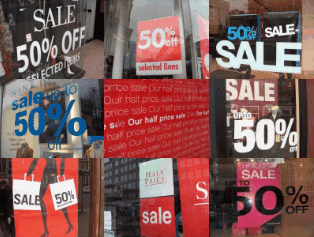
By Leith van Onselen
The Australian Bureau of Statistics (ABS) has just released the retail trade data for the month of February and, while it met analysts’ expectations, the release shows a sector still suffering the effects of household disleveraging.
In seasonally adjusted terms, retail sales rose by 0.2% in the month of February and by 2.0% year-on-year – below the rate of inflation and barely in line with population growth.
Below is a chart summarising the monthly and annual growth rates by industry on a seasonally adjusted basis:
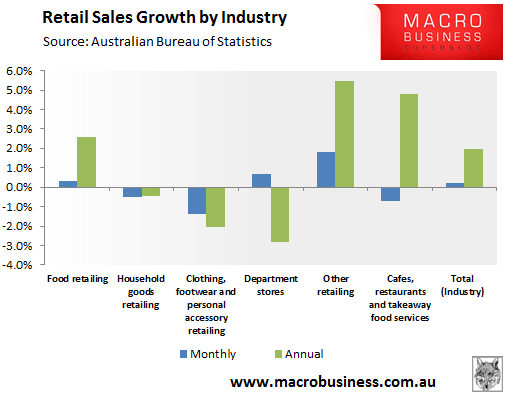
As you can see, it’s a mixed bag, with ‘other’ and ‘Cafes, restaurants & takeaway food’ growing solidly over the year. By contrast, ‘clothing footwear & personal accessories’, ‘Department stores’, and ‘household goods retailing’ contracted over the year.
At the state level, Western Australia has clearly dominated over the year and grew quite strongly over the quarter, whereas retail sales in New South Wales contracted both over the month and year-on-year:
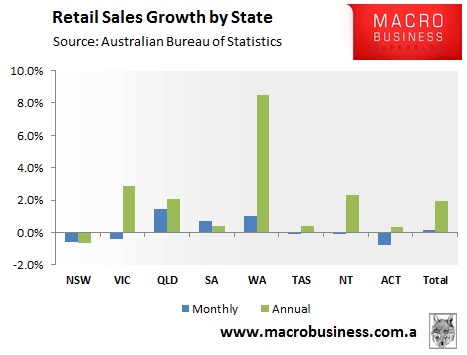
The below chart shows the growth of retail sales by sector in chain volume (real) terms since 1998. Note: the chain volume measure is only measured quarterly, so the results are current to December 2011.
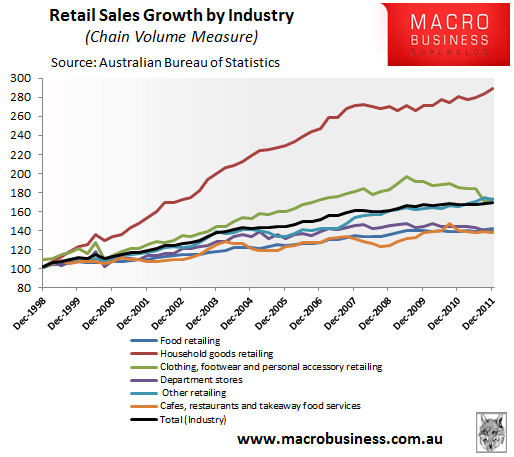
Mirroring the strong growth of Australian house prices over this period, ‘household goods retailing’ has been by far the star performer.
At the state level, you can see Western Australia’s out-performance more recently, and New South Wales’ under-performance over the period:
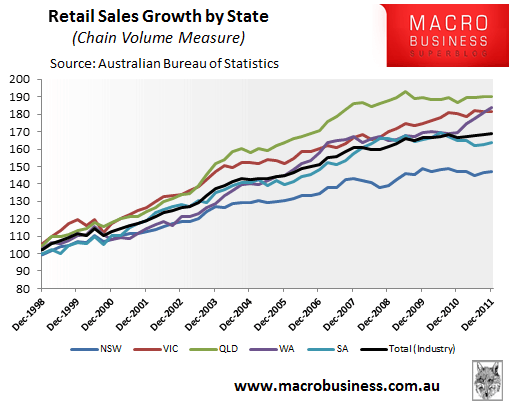
Overall, retail sales growth has clearly decelerated in chain volume terms, after solid growth to 2007:
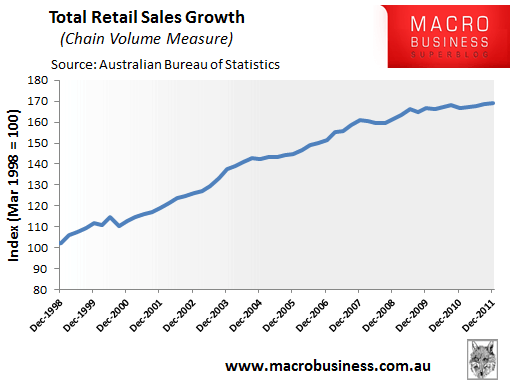
The situation is even worse when sales volumes are adjusted for population growth. As shown by the below chart, retail sales have actually fallen in real per capita terms since June 2007. This compares to the decade prior to 2007, when they were up 41%, or 3.5% per annum on average.
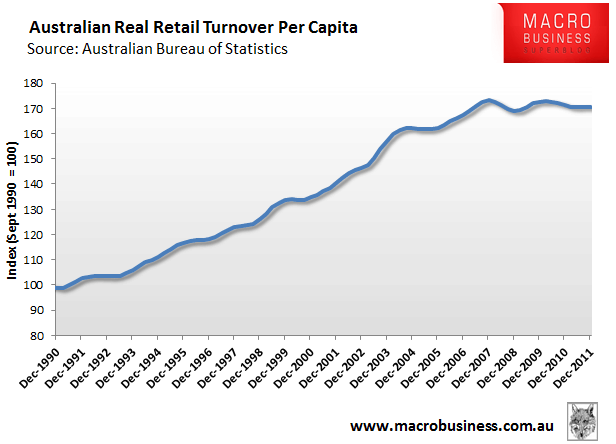
With household credit growth running at all-time (35-year lows) as Australians disleverage and household savings rates back at their historically normal level, combined with the negative wealth effect permeating from lower house prices, expect retail turnover in Australia to remain weak, with further job losses likely.

